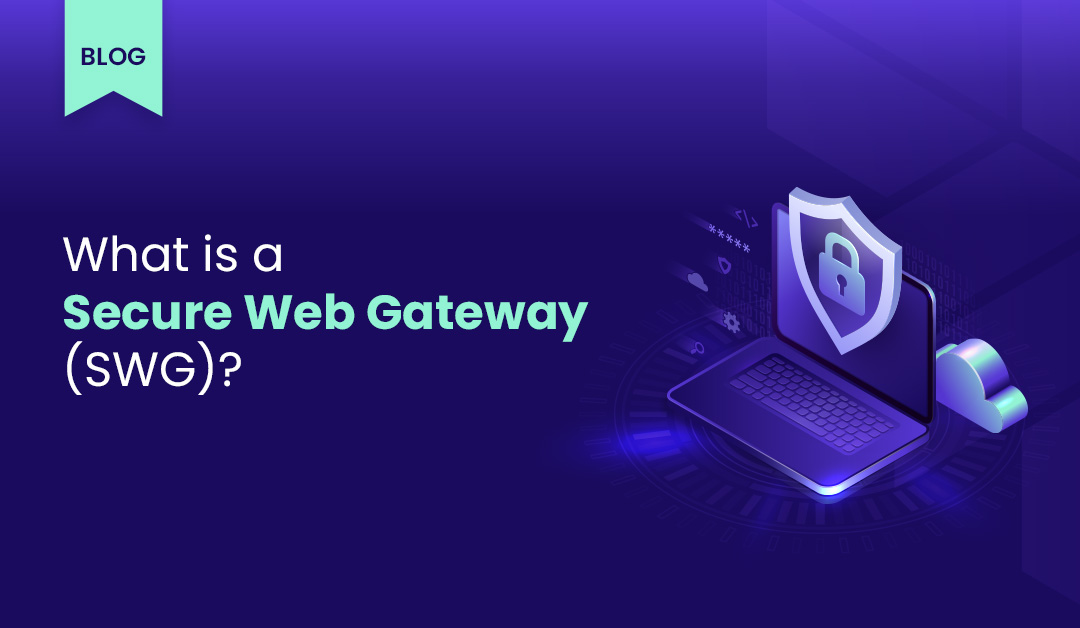What is a Secure Web Gateway (SWG)?
Secure Web Gateway (SWG) is a critical part of a company’s digital protection cybersecurity stack. This article discusses what a SWG is and why it is an important element in modern cybersecurity. A SWG acts as a barrier between an organization’s internal network and the open internet. It prevents unsecured web traffic, malicious websites, viruses, and […]
Author
Date
Category
All Categories
- AI-powered security
- Attacks & Threats
- Cybersecurity
- Hybrid Cloud
- Network
- Network Firewall
- Network Protection
- News
- Remote Workforce
- Security
- Zero Trust
Contents
Popular Posts
Product
Join the Newsletter

Secure Web Gateway (SWG) is a critical part of a company’s digital protection cybersecurity stack. This article discusses what a SWG is and why it is an important element in modern cybersecurity. A SWG acts as a barrier between an organization’s internal network and the open internet. It prevents unsecured web traffic, malicious websites, viruses, and other cyberthreats from infiltrating the organization’s network and compromising its sensitive data. SWGs also ensure compliance with regulatory policies and frameworks, safeguarding the organization’s reputation and avoiding potential legal repercussions.
Main Components of an SWG
Secure Web Gateways are used primarily to analyze and filter web traffic, providing extensive protection against various cyberthreats. Below are the key components of an SWG:
1. Web Traffic Inspection and Filtering
SWGs analyze incoming and outgoing web traffic, inspecting web requests and comparing them against predefined policies. This process involves URL filtering, examining the content for malicious code, and applying application controls for popular web-based apps like instant messaging platforms and video conferencing tools.
2. Malicious Code Detection
One of the primary functions of SWGs is to detect and filter out malicious code. By scanning web traffic in real-time, SWGs can identify and block potential threats before they can reach the organization’s network. This capability is crucial in preventing malware infections and data breaches.
3. Data Loss Prevention
Secure Web Gateways also incorporate data loss prevention mechanisms. They can detect sensitive data within web traffic, such as payment card numbers or personally identifiable information, and enforce policies to prevent unauthorized data exfiltration. This feature is especially valuable for organizations that handle sensitive customer data and must comply with data protection regulations.
4. SSL/TLS Inspection
As the majority of web traffic is now encrypted using SSL/TLS protocols, SWGs play a vital role in decrypting and inspecting this traffic. By decrypting and re-encrypting SSL/TLS-encrypted data, SWGs can identify and block threats that might be hiding within encrypted connections, ensuring there are no blind spots in the organization’s security defenses.
5. Real-Time Threat Intelligence
To stay ahead of evolving cyber threats, SWGs leverage real-time threat intelligence. They continuously monitor and analyze web traffic, incorporating newly discovered attack signatures into their detection mechanisms. By keeping up with the latest threat intelligence, SWGs can effectively identify and prevent attacks that might bypass traditional security measures.
Why Do You Need a Secure Web Gateway?
In the new risk economy where data breaches and ransomware demands are rampant, an SWG plays a critical role in protecting an organization and its sensitive data:
1. Enhanced Web Security
Secure Web Gateways provide robust protection against web-based threats, including malware, ransomware, phishing attacks, and other malicious activities. By filtering and blocking access to malicious websites and applications, SWGs significantly reduce the risk of infections and data breaches.
2. Regulatory Compliance
Compliance with regulatory standards and frameworks is a top priority for organizations in various industries. SWGs ensure that web traffic aligns with compliance requirements, helping organizations meet data protection regulations and avoid legal consequences.
3. Remote and Mobile User Security
With the rise of remote work and the increasing use of mobile devices, organizations face the challenge of securing their network beyond traditional boundaries. SWGs are a critical part of the security stack that is used to provide secure access for remote and mobile users, ensuring that their internet traffic is protected regardless of an employee’s location or the device they are using.
4. Granular Control and Policy Enforcement
SWGs offer granular control over web traffic, allowing organizations to enforce acceptable use policies and restrict access to specific websites, website categories, or web-based applications. This capability ensures that employees are productive, while preventing unauthorized activities, and mitigating the risk of data leakage.
5. Comprehensive Visibility and Reporting
SWG solutions provide organizations with comprehensive visibility into web traffic, user activities, and potential threats. This visibility enables proactive monitoring, threat detection, and incident response. SWGs also generate detailed reports that help organizations evaluate their security posture, identify trends, and make informed decisions to strengthen their overall security strategy.
Where does an SWG fit in the Cybersecurity Stack?
Secure Web Gateways can be deployed in various ways, depending on the organization’s needs and infrastructure. Here are the common deployment options:
1. On-Premise SWG
An on-premise SWG involves deploying the gateway as a workload on physical or virtual servers within the organization’s network. This deployment model provides direct control over the SWG infrastructure but requires maintenance and updates to ensure optimal performance and security.
2. Cloud-Delivered SWG
Cloud-delivered SWGs as a service have gained popularity due to their scalability, flexibility, and ease of management. With a cloud-based SWG, organizations don’t need any internal infrastructure and benefit from automatic updates and maintenance. This deployment model is particularly suitable for organizations with distributed workforces and remote users.
3. Hybrid SWG
In some cases, organizations adopt a hybrid approach, combining both on-premises and cloud-delivered SWGs. This hybrid model allows organizations to leverage existing infrastructure investments while extending security coverage to remote locations and users.
Conclusion
A well-thought out cybersecurity strategy of an organization must include SWG as one of the key components in the overall stack to protect the company network and its sensitive data. SWGs play a critical role in protecting against web-based threats, enforcing compliance, securing remote and mobile users, and providing comprehensive visibility into web traffic. By implementing SWG into their overall cybersecurity posture, organizations can safeguard their digital environment, mitigate risks, and ensure the confidentiality, integrity, and availability of their data and systems.
Get Started with Timus
Zero Trust. Adaptive Cloud Firewall. Secure Remote Access. In one.
